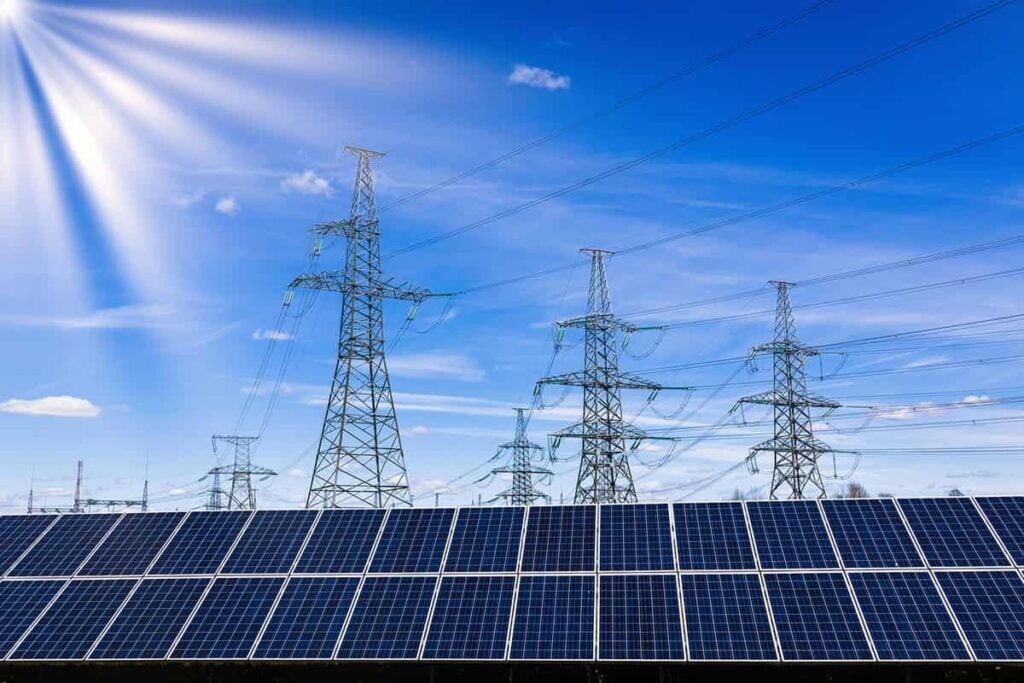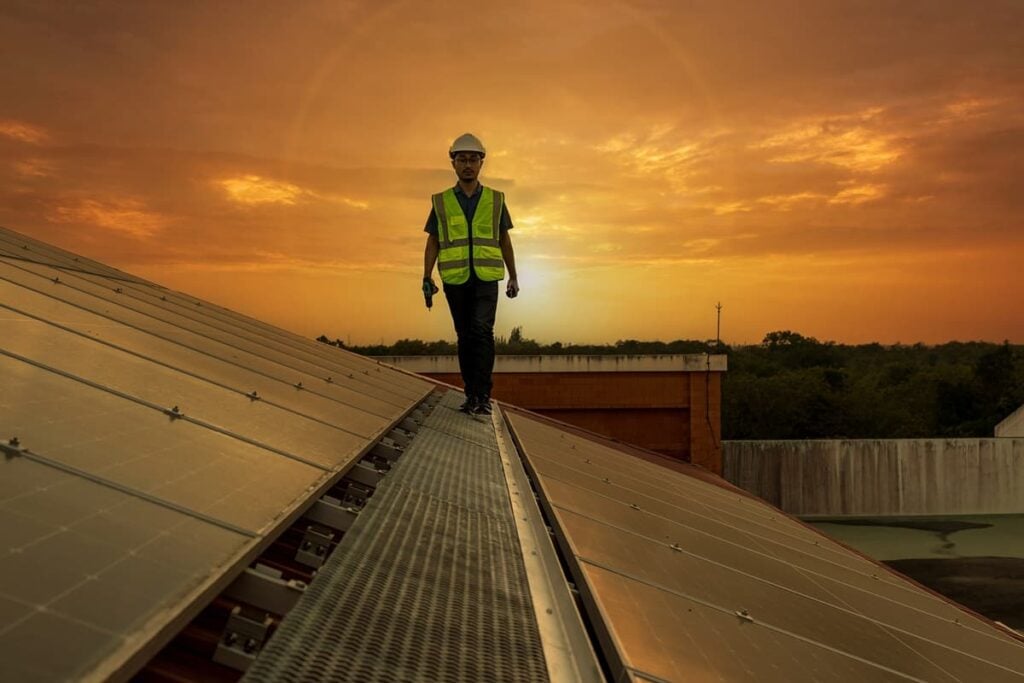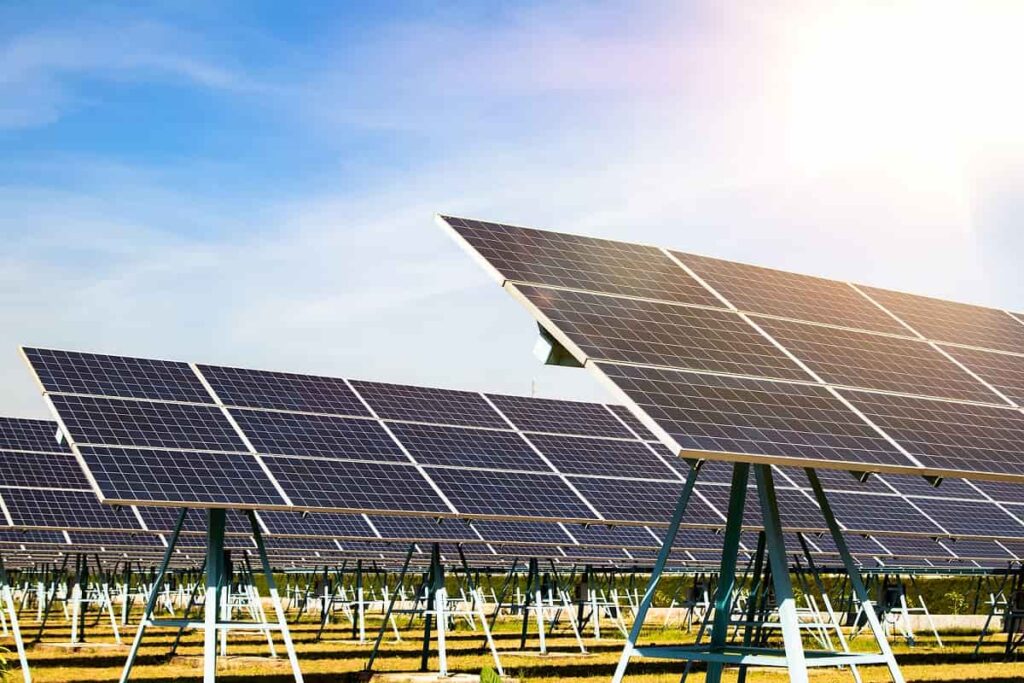How a Solar Panel Tracking System Works
Table of contents
If we want to understand how a solar panel tracking system works, we might consider it as a form of biomimicry with the idea being stolen directly from nature. Sunflowers are fast-growing plants, achieving heights of between 5 feet to 12 feet in less than six months. What’s most interesting about the sunflower isn’t how fast it grows, or that its seeds almost always form in a pattern that follows the Fibonacci sequence, but that the plant follows the sun until it grows old and stops. The process is known as heliotropism, and it refers to the motion of a plant or its parts in response to the direction of the sun. If you watch a sunflower at dawn, it’s always facing east waiting for the sun to rise. Throughout the day, it moves in response to the sun’s movement. The purpose that heliotropism serves is to maximize the energy a plant can extract from the sun’s rays. It’s nature’s own form of solar panel tracking.
This same method of efficiently harvesting the sun’s energy can also be used in today’s solar panels, a process known as solar tracking. We’re interested in understanding just how beneficial it is to use a solar panel tracking system as opposed to the fixed solar panels you see in place at most installations. Are fixed solar panels Betamax and solar panel tracking systems VHS? To try and answer this question, we turned to the leading solar tracking company in the world, NEXTracker.
About NEXTracker
Founded in 2013, Fremont, California startup NEXTracker had taken in around $47 million in funding before being acquired by Flex (FLEX) in 2015 for $330 million. Today, the firm designs, manufactures, builds, and services the world’s most advanced single-axis solar trackers and is considered to have the dominant market share in this space with 33% of the global PV tracker market by megawatts shipped in 2017 according to GTM Research. When it comes to solar tracking, there are a surprisingly large number of ways that we can track the sun. In order to determine which method is gaining the most traction, we can look at a breakdown of tracker unit shipments by type:

It appears that “decentralized auxiliary module” trackers are quickly displacing other types of tracking methods. Let’s learn more about how these types of trackers work by looking at NEXTracker’s solar panel tracking system called TrueCapture, an intelligent, self-adjusting tracker control system that increases the energy produced by a typical solar-powered plant anywhere from 2–6%. The first component of the system is the motor that’s used to rotate the panels.
How a Solar Panel Tracking System Works
We know that tracking involves tilting panels to follow the sun – or better yet – to provide the optimal angle for any given row of solar panels based on available light taking into account things like weather conditions. The first thing we noticed in the above chart is that “dual-axis” trackers are on the way out. These are trackers that can move left-right and up-down. The trackers that NEXTracker sells are single-axis trackers which utilize one motor to tilt an entire row of panels. Each row operates independently of other rows, yet all rows work together. Here’s how.
A self-contained motor on each row – which comes with its own dedicated solar panel to provide power – is operated by an accompanying controller which hosts intelligent control electronics that position each solar panel row for maximum yield.

Installation is quick and easy, with no drive shafts, extra cabling, grounding, or welding required. Up to 90 panels can be supported on a single row. The warranty is 10 years on structural components and 5 years on drive and control systems. The controller units are linked to each other and to the cloud with a wireless Zigbee mesh network. That’s where all the big data that’s being generated can now be analyzed using artificial intelligence.
Machine Learning and Solar Tracking
Back in 2016, NEXTracker acquired a machine learning company (they didn’t say which one) so that they could begin analyzing all the data being generated by their tracking system. It’s what the company refers to as “the lifeblood of TrueCapture.” Proprietary smart panel sensors are affixed to the end of each solar panel row to provide real-time shading information on each tracker row, which is then processed by machine-learning algorithms that build a virtual 3D model. The system even integrates the latest weather forecasts in order to calculate and send optimized tracking commands to every row. The more time that passes, the more data it generates, the more efficient the machine learning algorithms get.
Those are the basics when it comes to how solar panel tracking systems like TrueCapture can benefit a solar power plant. We’re barely scratching the surface here when it comes to technical details, so feel free to check out this presentation from NEXTracker if you want more information on actual case studies, other technologies they’re working on including bifacial solar panels, and their additional energy storage offerings like vanadium flow batteries, a type of energy storage we’ve written about before.
The Growth of Solar Panel Tracking
We know that “decentralized auxiliary module” solar panel tracking systems are rapidly gaining market share, along with NEXTracker leading the charge. The question remains, will solar power tracking systems be VHS technology of solar power plants? Going back to the GTM Research piece, global solar tracker shipments hit a record 14.5 gigawatts in 2017. This represents growth of 32% year-over-year for solar power tracking systems. And it’s not just the rich countries that can afford this type of technology. Mexico and Brazil are two of the fastest-growing solar markets in the world, each accounting for over 1.5 gigawatts of tracker shipments in 2017. Just look at the size of this solar power plant that NEXTracker has deployed their technology at (picture taken from one of their Q&A slides):
Of course, in order to gauge growth, we need to understand what percentage of solar power that came online in 2017 utilized solar panel tracking systems. While we don’t have that exact number, we have something close enough, along with some equally insightful facts that we’ll leave you with:
- According to the International Energy Agency, 98 gigawatts of solar power came online in 2017 – a 40% growth year-over-year. Still, solar power only represents less than 2% of total world electricity generation.
- Solar panel tracking shipments were 14.5 gigawatts on 2017 or about 14.8% of all solar power that came online in 2017
(Bear in mind that these solar panel tracking systems could have been installed on a solar power plant of any age, not just one that was deployed in the same year.) - China accounted for 54% of all the new solar power that came online in 2017
Conclusion
A while back we stopped using forward-looking market size estimates from all the research firms out there because such estimates varied so widely. It’s entirely pointless to provide some guesstimate like everyone else. Instead, we like to look at historical growth and use a bit of old-fashioned horse sense. Solar panel tracking systems seem to make sense in that they’re still going to give you efficiencies no matter how efficient the solar panels are that you use. It’s a good way to get some bolt-on energy gains as long as the Return On Investment (ROI) makes sense. And for a lot of solar power producers out there, it sure seems like it does.
Sign up to our newsletter to get more of our great research delivered straight to your inbox!
Nanalyze Weekly includes useful insights written by our team of underpaid MBAs, research on new disruptive technology stocks flying under the radar, and summaries of our recent research. Always 100% free.














